“Lo que a muchos averguenza, a otros hacer gozar.”
“What shames many, gives joy to others.” -Caption to a tiled mural that features tango dancers, Retiro subway station, Buenos Aires, Argentina
Following is an excerpt from Chapter 8. Falling Down and Getting Back Up Again, in my travel memoir, Tango, an Argentine Love Story (Seal Press/Avalon, coming in October, 08), in which I explore why tango is yoga.
. . . . First Alberto, then Juan Carlos. I could take myself to task big time for major lapses in judgment, but I pick myself up instead. And now I vow not to get back in the race. And I’m lucky, too, because instead of another lover, I find a wise new girlfriend in Carmen Iglesias. I like how her first name is a Spanish version of mine and that her surname means church. It turns out that her sister’s name is Graciela and my closest sister is Grace. We were both born in our grandmothers’ houses surrounded by their gardens, which we both grew up to love.
“My grandmother lived in a chorizo apartment,” Carmen tells me on the night we compare our stories.
“Mine lived in a railroad flat,” I said.
“My grandmother grew something called a Perfect rose, and I loved to look at them.”
“Mine grew herbs and vegetables, and I loved to eat them.”
Carmen dances tango like a flame on a breeze-or maybe sometimes she’s the breeze on the flame. She’s alternately dominated by passion or reason, and sometimes a fluctuating mix of both. I found her by following a paper trail. How could I not have been intrigued by her flyer, which announced “Dancing Yoga for Tango Dancers”? Since it’s my own conviction that tango is yoga, there was no way I could ignore the possibility of seeking out the person who’d made the same connection. Yoga is a discipline that sensitizes the body for subliminal messages (exchanged in tango) and greases the mechanical and energetic machinery at play like nothing else. It thrills me to an irreverent degree that my yoga feet stretch out from the balls (or metatarsals), not the toes, exactly like feet dancing in spike heels.
Many teachers pronounce ballet as an obvious supporting discipline for tango. But ballet, born among nobles and aristocracy during the Renaissance, is more focused on exhibition than either tango or yoga, both of which originated in humble milieus. While ballet developed to please the eye of observers, tango and yoga both developed from within, as nonverbal dialogues between opposing forces.
When I first call Carmen I’m pleased to find her English is much better than my budding Spanish. We set up a meeting at Confitería La Ideal’s Friday-afternoon milonga. I find her sitting in the women’s section, looking nothing like I expected. Taller and slimmer than me, she is my photo positive, light where I’m dark. She has striking glass-blue eyes and a massive bouquet of tawny locks. My own board-straight hair was long for years until I got back into dancing. After much deliberation, I cropped it, the dead weight falling away like snake skin whose shedding was long overdue.
She tells me how she is often mistaken for a foreigner. I laugh and say, “And I’m often taken for a Porteña.”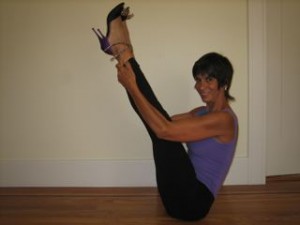 Which is something that delights me.
Which is something that delights me.
She tells me how she started tango just four years ago at Viejo Correo, a small neighborhood milonga in what appears to be an old family-style Italian restaurant with a grottolike interior of limestone-white walls, red tablecloths, and wrought-iron fixtures. The place makes me hanker for big plates of spaghetti and meatballs and Chianti that comes in those basket-cradled bottles.
Carmen says, “I looked around, and instead of seeing other tangueros enjoying this sensual dance, I saw a lot of people aching. It’s my profession to help people manage pain, so I knew I could teach dancers to conserve rather than lose energy while dancing, and to relax emotionally and psychically.”
Carmen tells me she works with men and women for whom embracing can be intimidating, and even traumatizing. It’s the first time I consider that not all Argentines have a natural affinity for hugging complete strangers. Having come from a family where people hug and kiss even after a huge fight, I know that I’m personally inured to this trauma.
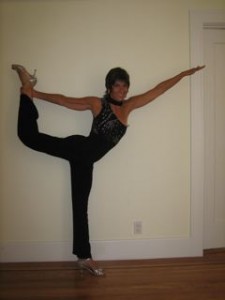 Carmen has the kind of healing practice you wouldn’t expect from an attractive Argentine who dresses almost exclusively in sporty attire. She started practicing yoga when she was seventeen, some thirty years ago, and claims it’s helped her overcome hepatitis. She studied art and worked as a fashion model. Then, while working as a marketing manager for Pepsi Cola, she fell ill from all the stress. She had severe anemia, but the doctors couldn’t treat it. “They gave me iron, but it did nothing. I couldn’t get out of bed. I was twenty-five. I died and my consciousness was opened. I can’t keep doing this, I said to myself. I recovered, and I stuck with yoga.”
Carmen has the kind of healing practice you wouldn’t expect from an attractive Argentine who dresses almost exclusively in sporty attire. She started practicing yoga when she was seventeen, some thirty years ago, and claims it’s helped her overcome hepatitis. She studied art and worked as a fashion model. Then, while working as a marketing manager for Pepsi Cola, she fell ill from all the stress. She had severe anemia, but the doctors couldn’t treat it. “They gave me iron, but it did nothing. I couldn’t get out of bed. I was twenty-five. I died and my consciousness was opened. I can’t keep doing this, I said to myself. I recovered, and I stuck with yoga.”
She continued in a traditional apprenticeship for twelve years with her teacher, an Argentine woman who was a disciple of a German lama who worked for German intelligence in World War I, and then studied in India before coming to live anonymously in Buenos Aires.
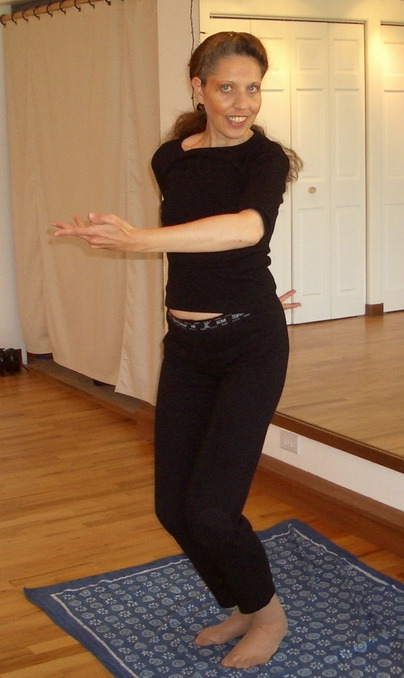
Here's Carmen.
When I watch Carmen dance I see the way her long lanky limbs display a graceful Isadora Duncan-style of yoga. By contrast, my Iyengar training is more isometric, akin to slow break dancing, whereby you actively shape and pull your muscles to create resistance within your own body. Both styles of yoga can support tango’s fluidity, or liquid balance, as well as its quebradas, or breaks in the standing body’s line, such as when the hips sway, or the spine torques laterally or vertically. And because yoga trains you to breathe calmly, even under stress, thus reducing your body’s natural propensity to sweat, it strongly complements a tango practice that requires a dancer to meet the moment with balance, flexibility, and spontaneity. Carmen and I talked for hours about all of this and more. We are like two zealots, ready to start our own church of yoga and convert the whole world.
“The human body is a miniature universe in itself,” writes yoga master B. K. S. Iyengar in his book Light on Yoga. I think about this a week later as I sit focusing on my inhaling and exhaling. Carmen has invited me to one of her workshops, and she’s asking us to consider our breath and how delicate our sense of smell is. “There’s a tiny hole in the nasal passage,” she explains, “and if you suck in too hard, you lose the aroma of the rose.” I consider this notion of not being able to hold the rose’s scent, and how the one thing in this universe that I’d want to hoard, my breath, I cannot. Breathing is an autonomous “letting-go” system. You cannot keep it, sorry, you have to give it back. And then I think of how easy my breath comes and goes when I dance tango.
Carmen has six of us little human “universes” sitting silently on the floor in a turn-of-the-century building on Venezuela in the Balvanera, a barrio where Carlos Gardel once lived. She directs us to breathe in for four counts and out for two. Sunshine shoots through the glass windows and lays intensely purple geometric designs on the floor, mats, and walls.
Carmen’s workshop works soothingly with the subtle body and doesn’t involve any of my pretzel poses. As we sit comfortably on our mats, Carmen describes the locus of the seven chakras from the base of the spine (the one embodying sexual desire) to the pinnacle of the skull (unity with the divine), symbolized beautifully in Eastern art by the thousand-petaled lotus. The chakras , says Iyengar, correspond to glands, gonads, and organs, and “regulate the body mechanism as fly-wheels regulate an engine.”
So much ancient wisdom lies along the spine. For Hindus, the spine is the channel for kundalini, represented by a circular serpent, its tail in its mouth. Kundalini, says Iyengar, is “latent energy that has to be aroused and made to go up the spine, piercing the chakras.” You can think of this as an allegory, he says, “for the tremendous vitality, especially sexual” attained with yogic practice. The serpent materializes when yogic breathing, called pranayama, opens the chakras. Such is my tango rapture, when my breath is so deep and big, I am the universe. My prowess, skill, and strength are not just sexual, but valiant-I want nothing less than this same vitality I feel for every being in the cosmos.
Bold and stout-hearted, I imagine the kundalini serpent we’ve just generated swaying with us in the next segment. Carmen has us stand and dance freeform-moving our hands and fingers as in flamenco. “The hands are very important to move energy around and inside us so that we never get tired,” she says. And with her hands like twirling butterflies, she moves her whole upper body like fire in a breeze, her legs rooted to the earth like an ombú tree. For all the dancing I’ve done, including ballet, jazz, and tap, I’ve never worked with my fingers. I try it and feel the surge of something new.
With this we begin to dance to milonga music. We work on a common contrabody-movement (CBM) that requires gentle torsion of the spine, often called “body disassociation,” a phrase that I find distastefully reminiscent of a psychological disorder.
Carmen helps each participant to correctly execute the CBM, using the breathing techniques we have just practiced. The three-hour workshop winds down with everybody’s favorite pose, savasana, or corpse pose. We lay on our backs, breathing, zoning out, and Carmen makes soothing hands-on adjustments to our “dead” bodies.
When we came back to life, Carmen introduces us to each other. I’m pleased to meet Cecilia Gonzales, a teacher who dances with Cacho Dante, a milonguero locally renowned for his exceptional musicality. One of the men is Carmen’s friend, Ed Waller, from Santa Cruz, California, who has kind eyes, as blue and sparkly as Carmen’s. He pays me a great compliment in telling me that he’s watched me dance at Club Espagnol and wanted to dance with me. How could I have overlooked such a sweet countenance? I wonder. “Well, let’s, next time,” I say. Ed also shares my attraction to Zen, meditating regularly at Shobogenjii Temple in the Palermo. I know I will want to see more of a person who, like me, regularly navigates the overlapping paths of tango, Zen, and yoga.
I invite Carmen to come by my loft to talk about the possibility of my doing an article on her for Yoga 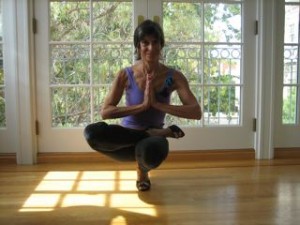 Journal. I’ve been looking for subjects to write about, and I think she’d be perfect. When she arrives, I share with her a story I wrote on yoga studios in New Orleans, post-Hurricane Katrina. Carmen has already told me that she has never been drawn to my style of yoga because of the way Iyengar focuses mostly on the physical end of the practice.
Journal. I’ve been looking for subjects to write about, and I think she’d be perfect. When she arrives, I share with her a story I wrote on yoga studios in New Orleans, post-Hurricane Katrina. Carmen has already told me that she has never been drawn to my style of yoga because of the way Iyengar focuses mostly on the physical end of the practice.
It had come out as an apology, but how could I take offense? I’m often hard-pressed to sift the physical out of the spiritual. I entered yoga from a purely physical motivation. Having developed limberness early on from acrobatics classes, I took to yoga easily. I began a regular practice with a book by Yogi Vithaldis in 1973. Even then, yoga-an exotic Eastern art elsewhere-was in the air like San Francisco’s fog. In 1984, I spent a weekend at Kripalu Institute, an ashram in a former seminary in the Berkshires of Massachusetts. I loved the experience-the rustic lakeside scenery and rainbow of fresh vegan food-but I was turned off by the bowing to Hindu gurus, mostly men, or, more accurately, to their images. When I came to Zen Buddhism, I understood that the frequent bowing and prostrations were paying homage, not to any person, but to our collective enlightenment. And I loved the way we collapsed the body to touch our forehead to the ground, a dramatic act of surrender to the universe that appealed to the dancer in me.
When Carmen is done reading, she timidly takes out a package. I watch her thin-boned fingers, those of a Galician princess, undo the brown paper to reveal two substantial pieces of cake layered thickly with dulce de leche.
This custard-like confection is an Argentine invention that reminds me of tango in how delightful it is with just its bare essential ingredients. The cook combines nothing more than milk (four liters) and sugar (one kilogram), and a bit of vanilla if desired. You need a patient stirring arm, but it’s the fuego muy fuerte (very high flame) that caramelizes and thickens, transforming the mixture into a heavenly custard greater than the sum of its parts.
“It’s from Confitería La Burdalesa on Sante Fe,” Carmen tells me. I give her a look that tells her I haven’t heard of it. “You haven’t been there yet?” Her eyes are wide and incredulous.
I boil water for linden leaf tea and we sit like ladies of leisure at a yoga church social, ready to indulge. When I put the first forkful of tender dulce de leche-laced cake on my tongue, I taste a sure-fire friend. “¡Qué rico!” I exclaim, using that favorite four-letter word of mine that I use to describe a sensory spectrum that ranges from rich and delicious food to the divine scent of a man.
I try to take it in as slowly as Carmen, but I get way ahead of her as she talks-about men, husbands, kids. She’s just returned from Port Townsend, Washington, where she taught workshops to the small tango community and stayed with her American boyfriend, Francis.
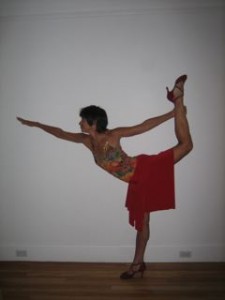 “But we’ve decided we should now be just friends,” she says matter-of-factly. Like a good girlfriend does, I detect the underlying disappointment and stoicism and respect it. She proudly tells me that she’s never been married and has never wanted children. “I never felt the need to recreate myself.” I like her unequivocal tone, the way that it rang so true without being a sideways criticism of those who choose to have children. Rather it’s her shorthand way of letting me know she is (like me) among women who did not labor long and hard over our “biological fate.” No doubt we’ve had our share of anguish, though, over other ideals, destinies, dreams, dragons, demons, men, all the other good stuff that can consume women.
“But we’ve decided we should now be just friends,” she says matter-of-factly. Like a good girlfriend does, I detect the underlying disappointment and stoicism and respect it. She proudly tells me that she’s never been married and has never wanted children. “I never felt the need to recreate myself.” I like her unequivocal tone, the way that it rang so true without being a sideways criticism of those who choose to have children. Rather it’s her shorthand way of letting me know she is (like me) among women who did not labor long and hard over our “biological fate.” No doubt we’ve had our share of anguish, though, over other ideals, destinies, dreams, dragons, demons, men, all the other good stuff that can consume women.
Her stance on marriage and children is particularly rare in this Latin country. The number of melon-shaped bellies on young women in Buenos Aires is remarkable-as is the divorce rate. Nearly every man over forty whom I meet in the milongas either has two grown kids and is separated or divorced, or never married the mother of his children in the first place. Subway seats and parking places display icons reserving them for pregnant women.
I give Carmen a few dismal sound bites on Dan. I use her same matter-of-fact, stoic tone, not wanting to get drawn into the details just yet, and having exhausted myself with a good morning cry earlier that morning. As for kids, I tell her, I adore them. But I relish my balancing act, in the spirit of zero-population growth, for my siblings, who, so far (bless them), have given me three dozen nieces and nephews at last quarter’s count. Some of them are “greats,” though I can’t keep them straight because of the way some of the greats are older than the previous generation. If Carmen had been weaned on the glass teat of American TV, I’d have told her how my family could have written the old Pillsbury jingle: Nothin’ says lovin’ like somethin’ from the oven.
I confide in her that Dan and I had visited the option of having a child much more optimistically than we ever visited the idea of marriage. We were already of “advanced age” repro-wise by the time we seriously started these conversations, but fertility ran rabidly high in our families and I know we could have, would have, maybe should have if we really wanted one. Somehow we didn’t, though. We let it drop, our busy lives pulling us places, filling our days.
And then came tango.
Although I’ve only known Carmen a short time, I notice that she often appears distant and sad. Other times her eyes sizzle like a Fourth of July sparkler-like when she talks of wandering farther down a spiritual path than she had ever imagined from her days as a rep for a Fortune 500 company. In 1996, she attended the University of Yoga in Brazil, where, she says, she “got in touch with the most ancient form of yoga, Swasthya, where you dance the asanas.” She tells me that Swasthya originated in northern India and that flamenco, too, had seeds there-something I never would have guessed.
“I thought it developed in Andalusia, ” I say.
“Yes, but five thousand years before that, in northern India, all yoga was tantric, which involves powerful rituals of body and mind, including mantras and mudras with the hands.” Her hands suddenly levitate and flutter in arclike swirls as she demonstrates the mariposas, or butterflies, she showed us in class. I see the flamenco in her wheeling hands. I look at the backs of my brownish hands, coarse-knuckled with large nail beds, too big for my body, and sit on top them.
“Well, when the Aryan hordes invaded northern India, they forbade the tantra practices because they bring about a very balanced sex life, and you don’t want to go to war-”
“I’ve been thinking this about tango,” I interrupt. “If more people danced it, I think we’d have a long period of world peace.” I don’t tell her that in my wildest imaginings, tango dancers form cells like al-Qaeda, kidnapping terrorists and state-sanctioned war makers and getting them all to dance tango. I recognize that it’s magical thinking, but in my reveries tango becomes the rehab of choice in drug clinics and prisons, for sex offenders and wayward heads of state.
“So,” she continues, either ignoring me or humoring me, “there was a diaspora from India. Some people went to China, where they influenced Chinese medicine, which uses mudras, too. Some went to other parts of India, where Patenjali and Vedanta yoga for health blossomed. And others went to the south of Spain, where the mudras eventually manifested in flamenco.”
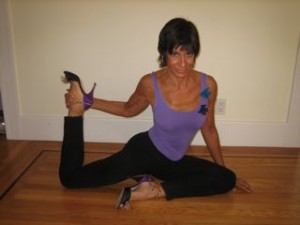 What a deep archaeological dig it is, I think, to dissect tango’s roots and influences. You scrape away at successive layers beyond Argentina and find Italy, Spain, Cuba, Africa, and now India. Tantra, an ancient form of spiritual eroticism (or erotic spiritualism), surfaces in flamenco, which surfaces in tango. I love the idea of excavating the dance’s sexuality down to a spiritual grounding.
What a deep archaeological dig it is, I think, to dissect tango’s roots and influences. You scrape away at successive layers beyond Argentina and find Italy, Spain, Cuba, Africa, and now India. Tantra, an ancient form of spiritual eroticism (or erotic spiritualism), surfaces in flamenco, which surfaces in tango. I love the idea of excavating the dance’s sexuality down to a spiritual grounding.
I think how after a mere two months here, with two ill-advised liaisons under my belt, I have profaned two things I held sacred: tango and sex. Falling down at this rate, I’d be picking myself up from twelve bum adventures per year. I take no solace in the knowledge that this is not what Michael Wenger meant.
You might think that tango has a frying-pan-into-the-fire danger for someone who’s interested in healing from intimacy gone awry; that the ashram, temple, zendo, or convent would have been the better choice. But no, the fuego is right where I belong.
As Carmen and I talk, the realization of what I need to do begins to take root: I need to heal by holding off from the act of sex rather than indulging my every infatuation. At least for a while.
I show Carmen two books I have on tantric yoga. I’ve been curious about tantra, whose Sanskrit root “tan” means “to stretch”-as if it might be the missing link between the tango and yoga. I do not hold the misconception of many Westerners that tantra yoga was a Kama Sutra solely focused on physical pleasure and the Big O-achieving unbelievable long-lasting chains of godly orgasms. Instead, tantra and tao sex are much more about the great discipline of delaying orgasm. (Men, you’ll have to read the book to believe me when I say that it is in fact incredibly gratifying.)
Carmen pulls out of her bag an even more detailed book to read, Healing Love through the Tao, by Mantak Chia. It’s dog-eared and underlined. She knew there had to be a better alternative to the kind of yogic celibacy that promotes saving the sexual energy for higher purposes. Her investigation led her to the tantric option which recycles sexual energy and desire. She says that I simply have to spend time with the book.
“Good luck finding a guy who will do all of this,” she tells me.
“I’ll break him in slowly,” I say. “I won’t tell him right off the bat that a man’s test of his sexual prowess is his 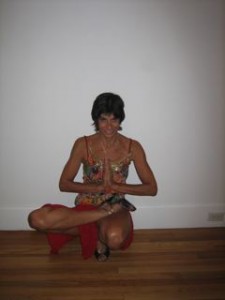 ability to imbibe a glass of wine through his penis and then release it back into the glass-proving his ability to control release of semen, thus valuable energy.”
ability to imbibe a glass of wine through his penis and then release it back into the glass-proving his ability to control release of semen, thus valuable energy.”
“No I wouldn’t bring that up on the first date,” Carmen says, laughing. And then she gives me one of her pearls. “If you look for the spiritual, you will find pleasure, but if you look for just pleasure, it’s unlikely you will find either.”
“I’ll remember that,” I promise.
End of excerpt – copyright 2008 Camille Cusumano All rights reserved. No part of this book may be reproduced or transmitted in any form without written permission from the publisher, except by reviewers who may quote brief excerpts in connection with a review.
Published by Seal Press, a member of Perseus Books Group, 1700 Fourth Street, Berkeley, CA 94710, (510) 595-4228.
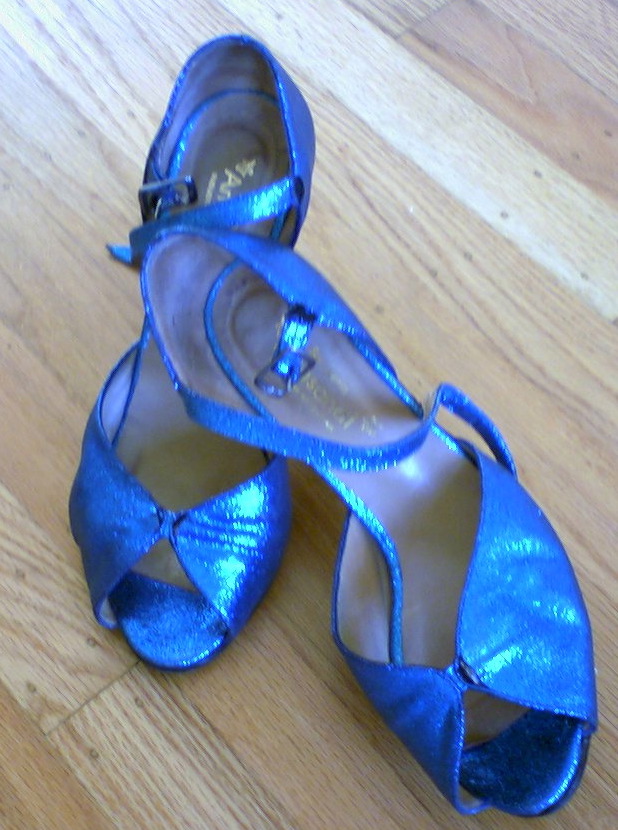 P.S. Carmen Iglesias teaches mainly in Buenos Aires, Argentina, but has given workshops in Port Townsend, Washington. You can visit her Web site at www.danceyogacarmen.com. Or contact her at [email protected]. If you’re in Buenos Aires, stop by her weekly Tuesday class, 11 a.m. Email, or call (4962-4600) for address and to reserve.
P.S. Carmen Iglesias teaches mainly in Buenos Aires, Argentina, but has given workshops in Port Townsend, Washington. You can visit her Web site at www.danceyogacarmen.com. Or contact her at [email protected]. If you’re in Buenos Aires, stop by her weekly Tuesday class, 11 a.m. Email, or call (4962-4600) for address and to reserve.

Yes, tango is yoga.
I Really Love Reading Your Blog. Excellent. Keep up the great work!
i am currently enrolled in a Yoga class. the health benefits of Yoga on myself is great. I am more relaxed and i can sleep well at night.
The mind’s first step to self-awareness must be through the body.
Sorry for dem as dont undersand spanish but el tango es argentino y hablar de el en inglés no me copa. Justo hayer después de la clase de tango med puse a aplicar a los pasos de colgadas y volcadas lo que he aprendido de yoga. Pega justo!! el tango y el yoga se puede practicar juntos y los movimientos suaves del yoga ayudan a darle sensualidad a la dansa!
Saludos de Lund, Suecia
Luis
nice post to read!!!!
well written post!!!!
well written and informative post!!